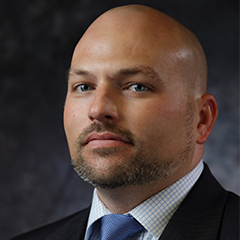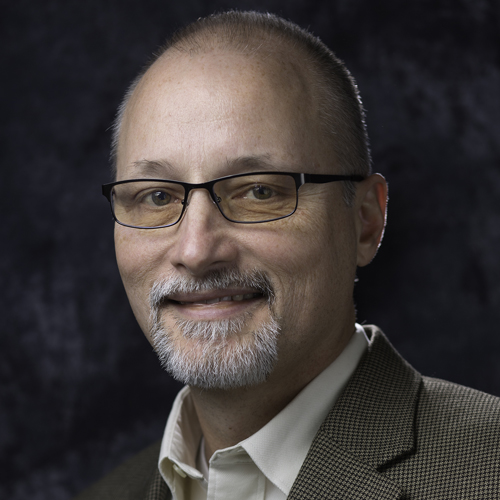The structure of Safe-D includes a formal T2 Coordinator, Dr. Mike Mollenhauer. Dr. Mollenhauer has 15 years of experience fostering relationships with stakeholders, including government affiliates and industry partners, and has proven leadership experience in small startup businesses. He also founded and currently directs the Center for Technology Implementation at VTTI, a center specifically focused on T2 and helping industry overcome early-stage implementation challenges. As coordinator, Dr. Mollenhauer will 1) work with researchers to incorporate T2 into all projects; 2) compile T2 materials from all projects; 3) incorporate the new materials into T2 programs; and 4) develop and manage a T2 process for all subsequent Safe-D projects to ensure positive T2 outcomes. Dr. Mollenhauer will work with all consortium researchers with the aim of synergistically assembling and disseminating quality T2 materials and support.
The inclusion of a T2 component into each UTC project is a key component of the Safe-D center. Thus, to receive funding, a project must have a T2 plan.
The Safe-D Technology Transfer (T2) Plan
The current version of the Safe-D T2 Plan was approved by OST-R in September 2018. The Safe-D T2 Plan is focused on describing how the Safe-D UTC Leadership Team will manage its T2 activities to facilitate the rapid implementation and commercialization of research outcomes. At the heart of this plan is a mandatory research project process that each Safe-D research team must adhere to while planning for and conducting their individual projects. This process is designed to maximize interaction with industry partners, thereby promoting the adoption of research outcomes. Herein, this Safe-D project process is first described in detail as it provides a structured framework for how each project will address T2 requirements from research topic formulation to project conclusion. Subsequently, the overall Safe-D T2 process is described with a focus on how the Safe-D UTC will address the following aspects:
- Identification and involvement of stakeholders in the Safe-D research, education, and workforce development programs
- Plans to assist research partners in implementing and deploying research outputs
- The commercialization process for research outputs
- Collection and use of licensing revenues to provide further support for research and T2
- Dissemination of our research results
- How research outputs, outcomes, and impacts will be tracked and reported
- How corporate research support will be increased
- T2 goals and T2 performance measures
Examples of Successful Technology Transfer
To help give a better understanding of what is meant by T2, below are some examples.
- VTTI bundled a set of technologies developed during previous R&D projects and disclosed them to spinoff company Transecurity. The bundle included a hardware and software suite that monitors driver behavior through cameras, sensors, and algorithms along with a back-office management system. These T2 efforts significantly advanced the startup company’s product development endeavors. VTTI also created and now operates the Global Center for Automotive Performance Simulation, an affiliated company of Virginia Tech providing advanced vehicle dynamics testing and simulation.
- At SDSU, Dr. Supernak and his team posted 45 research reports stemming from two projects related to the I-15 corridor on the SANDAG website for easy access by interested organizations, consultants, and fellow researchers. The high number of citations (270 from the Google Scholar profile) demonstrates that the research results were successfully communicated and applied.
- Since 1987, TTI innovators have formally submitted 238 utility inventions, 32 software inventions, and five trademarks to the A&M System as having commercial potential. During this same time period, innovators at TTI have been awarded 60 U.S. patents. TTI also operates the award-winning National Work Zone Safety Information Clearinghouse, the world’s largest cyber library of work zone safety-related information. It has been accessed nearly two million times since its opening, and has received awards from both the International Road Federation and the American Society of Association Executives (ASAE).
- A form of technology transfer through dissemination of key findings is also achieved through media outlets. As the largest transportation institutes in the nation, VTTI and TTI produce more than 8,000 media hits every year with broad reach across the industry and public domains.
Existing Technology Transfer Programs Available to Safe-D
As T2 is an important mission for VT, SDSU, and TAMU, Safe-D researchers already have access to a large pool of resources through these universities, including:
- Virginia Tech Intellectual Properties (VTIP), an affiliated corporation of VT dedicated to technology commercialization, is passionate about creating market opportunities from scientific innovation. VTIP ensures that research results make positive contributions to society by protecting, marketing, and commercializing technology and innovation.
- TAMU’s Technology Commercialization Agency and SDSU’s Technology Transfer Office work with researchers at these universities to identify academic projects with commercial value; find partners for commercialization; and protect, develop, market, and license the IP rights.
- The Communications Programs at TTI and VTTI offer a full suite of T2 resources, including print and video production; Internet publishing; customized public/media relations campaigns; technical writing and editing; presentation and exhibit design; website development; and social media promotion.
Planned Technology Transfer Activities
The T2 activities of the Safe-D will extend beyond the existing services with dedicated programs facilitated by the T2 Coordinator. These programs will be available to UTC researchers as options to fulfill their T2 obligations within each research project. New programs will also be designed to expose students in each of the consortium universities to the T2 and research dissemination process. Activities will include:
- T2 Technical Briefs and Videos: The center will develop a dedicated T2 publication and associated online repository including project briefs tailored to practical technological application. These briefs will be distributed to stakeholders and beyond to our large collective lists of public and private contacts.
- Workshops and Conferences: As part of the T2 plan, all funded UTC projects are required to develop content to present at a minimum of one nationally recognized conference or workshop. These presentations will be made public on the website.
- Journals and Other Publications: Every funded UTC project will also be required to publish at least one journal article. Peer-reviewed conference proceedings will be accepted, although researchers will be encouraged to target prestigious journals to reach more diverse audiences and help students build credibility.
- T2 Promotion Events: For projects with commercialization potential, the Safe-D will convene promotional events during which project teams will pitch their ideas to the attendees to obtain feedback on how to improve the feasibility of technology adoption and strategies to mitigate barriers to implementation. We expect such events to initiate commercialization discussions.
- Web Presence and Social Networking: The Safe-D will create a comprehensive web presence with a website that provides a full description of the UTC along with portals for education and workforce development content and T2 materials. Building on the successes of our past social networking experience, consortium researchers will leverage Facebook, Linkedln, Google+, SlideShare, and YouTube dissemination channels.
- Short courses: Findings of Safe-D projects will be incorporated into short courses targeted at non-academic audiences. For example, we plan to create a course for TTI’s annual Transportation Short Course, which brings together over 2,400 TxDOT employees and the TTI Transportation Safety Conference which attracts over 300 academics, researchers, and industry professionals to discuss cutting-edge ideas and strategies for implementing research results and features prominent national experts such as NHTSA Administrator Mark Rosekind.
Technology Transfer Coordinators

Luke Neurauter
- 540-231-1522
- lneurauter@vtti.vt.edu

Mike Mollenhauer
- 970-227-3373
- mmollenhauer@vtti.vt.edu
